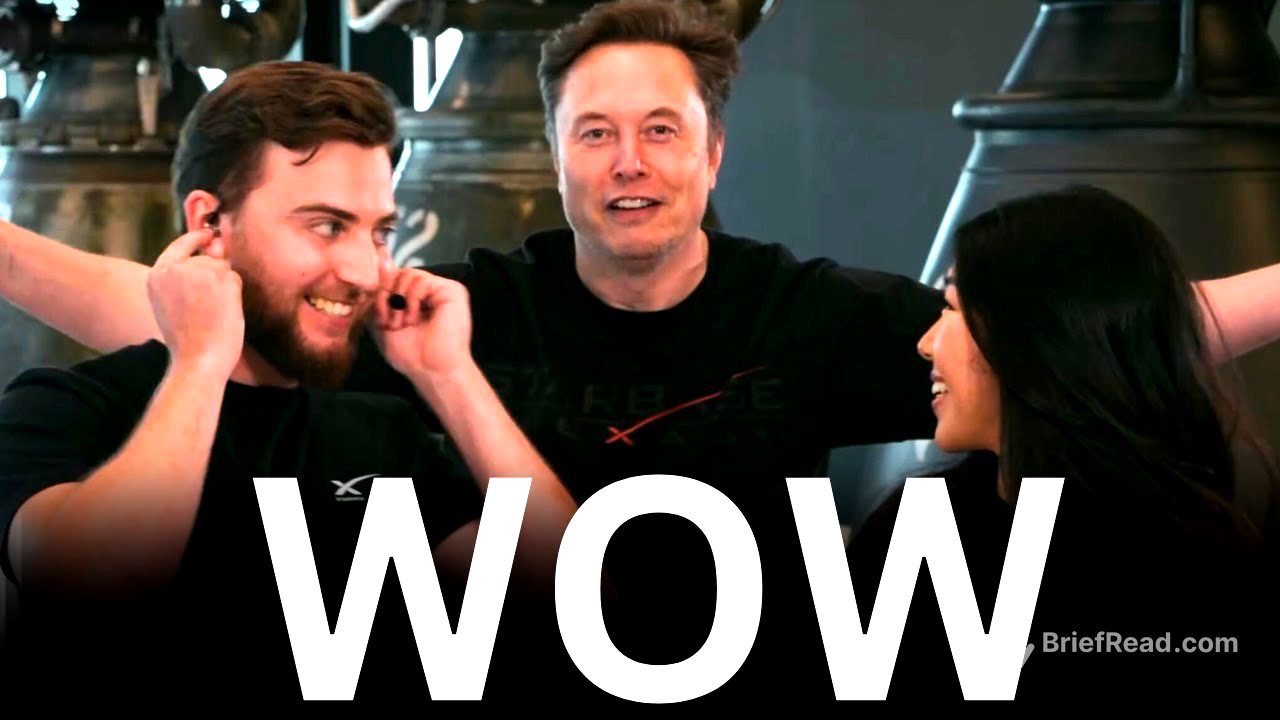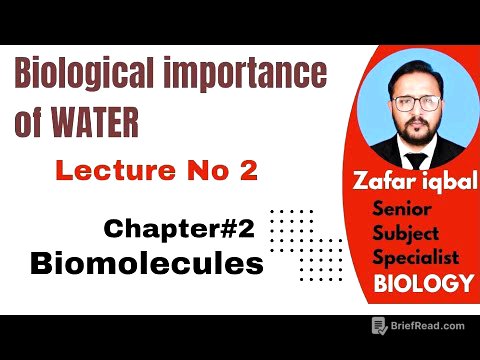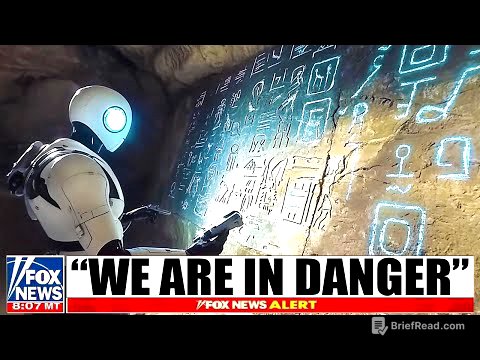TLDR;
This video provides a detailed recap of Starship's latest flight, covering key milestones from liftoff to landing. The flight aimed to gather critical data on various aspects of the spacecraft's performance, including engine ignition, stage separation, payload deployment, and re-entry.
- Successful hot staging and boost back maneuvers.
- Deployment of eight Starlink simulators.
- Relight of a single Raptor engine in space.
- Controlled re-entry with intentional tile removal for stress testing.
Pre-flight and Liftoff [0:00]
The video starts with a brief pre-flight discussion, where the team expresses excitement about the upcoming launch. One of the team members mentions that this will be the first time they are watching the rocket launch from outside, which will provide a more visceral experience compared to being in mission control. The launch sequence begins with a countdown, followed by the ignition of the engines and liftoff. The narrator announces, "We have liftoff," marking the beginning of the flight.
Ascent and Staging [0:43]
Approximately 45 seconds into the flight, all 33 Raptor engines on the Super Heavy booster are confirmed to be lit. The rocket is observed arcing across the Gulf. The broadcast team discusses the upcoming hot staging event, which is expected to occur in just over a minute. During hot staging, all but three of the Raptor engines on the Super Heavy booster will shut down. Following the engine shutdown, clamps holding Starship to the hot stage adapter will release, and Starship will ignite its six Raptor engines to separate from Super Heavy and continue its ascent.
Hot Staging and Boost Back [3:37]
The hot staging maneuver is executed successfully, with 12 of the 13 engines on the booster relighting for the boost back. Simultaneously, all six Raptor engines on Starship ignite, allowing it to continue its ascent into outer space. The booster uses 12 engines for the boost back, eventually reducing to three before shutting down completely, guiding Super Heavy toward its planned splashdown zone in the Gulf. The hot stage separates and also splashes down in the Gulf.
Booster Landing Attempt [5:12]
The booster initiates its landing burn, a critical objective of the flight. The booster uses four hypersonic grid fins to navigate through the atmosphere towards its landing site. The landing burn sequence involves igniting 13 center engines, reducing to five, and finally cutting off all engines at approximately 200 meters above the water. The booster then experiences a hard landing in the water.
Starship's Ascent and Orbital Insertion [5:58]
Starship maintains a nominal trajectory as it continues its ascent. With about two minutes remaining in the ascent burn, all six Raptor engines are still firing. The next major milestone is SECO (Second Stage Engine Cutoff), expected around 8 minutes and 58 seconds into the flight. The team confirms nominal orbital insertion, indicating Starship is on the desired path.
Payload Deployment [11:18]
The team prepares for payload deployment, which begins with opening the payload door. The payload consists of eight Starlink simulators. The successful opening of the payload door is confirmed. The deployment of the Starlink simulators begins, with each deployment taking approximately one minute. Starship will deploy Starlink's more advanced V3 satellites, adding 60 terabits per second of capacity to the network per launch, which is 20 times more than each Falcon 9 launch does today. The dummy satellites will follow the same suborbital trajectory of the ship and are expected to burn up on re-entry.
Raptor Relight [22:02]
After payload deployment, the broadcast returns to cover the relight of a single sea-level Raptor engine in space, occurring just after T+37 minutes. This is the third attempt at this maneuver, with successful relights achieved on flights 6 and 10. The Raptor engine successfully reignites and shuts down, marking the third consecutive successful attempt.
Re-entry [24:37]
Starship begins its re-entry into Earth's atmosphere. The spacecraft is not planned for recovery, but rapid reusability remains the ultimate goal. Plasma starts to build on the windward side of the rocket. The team mentions that they are pushing ship to the limits and have removed tiles in some of the spots that see the highest level of heating. The ship is designed to land on Mars where there are no runways or other humans to help out, so that means they need to do a propulsive landing instead of a more traditional means like parachutes.
Peak Heating and Banking Maneuver [31:31]
Starship enters the peak heating phase of flight. The vehicle is performing a banking maneuver, turning while supersonic and hypersonic, followed by an aggressive turn as it enters subsonic speeds. This maneuver simulates the approach for a return to launch site and tower catch. The team confirms that the skirt is intact so far this time.
Transonic and Subsonic Transition [39:28]
The light show diminishes as Starship moves into the lower atmosphere. The vehicle is expected to hit transonic, transitioning between supersonic and subsonic speeds, in about 3.5 minutes. The landing burn is anticipated around one hour and six minutes after launch. The team expresses hope for external views of Starship as it descends.
Final Approach and Landing [44:51]
The ship is making its turn for final approach. The landing burn initiates with three engines, reducing to two for the final phase. Starship lands softly in the Indian Ocean. The team confirms that they are not planning on recovering the ship today.









